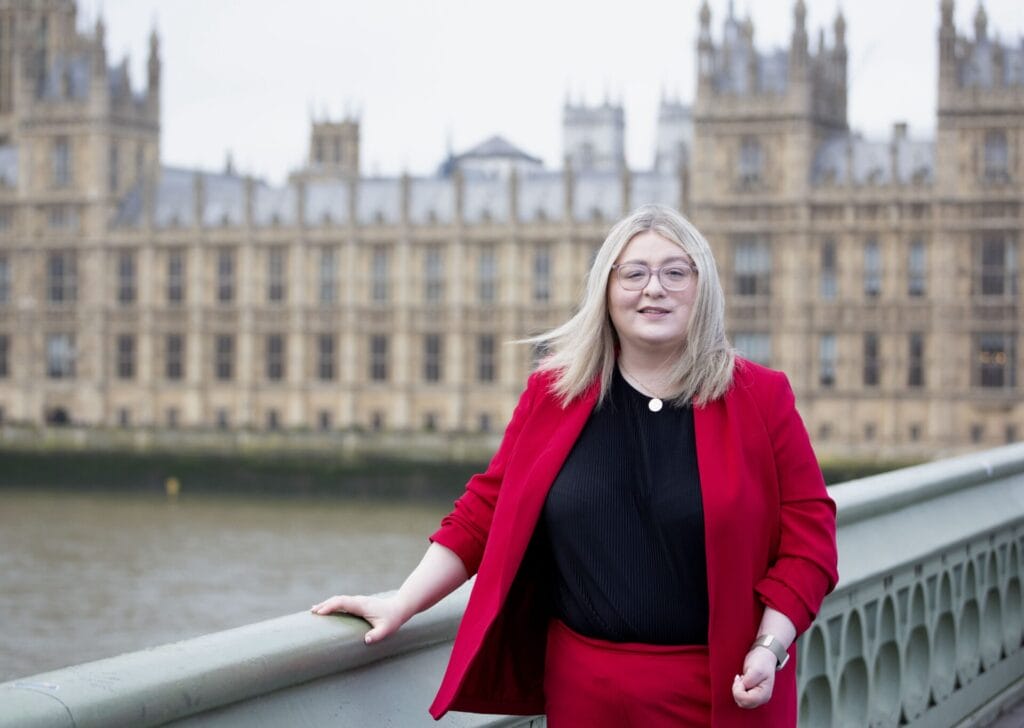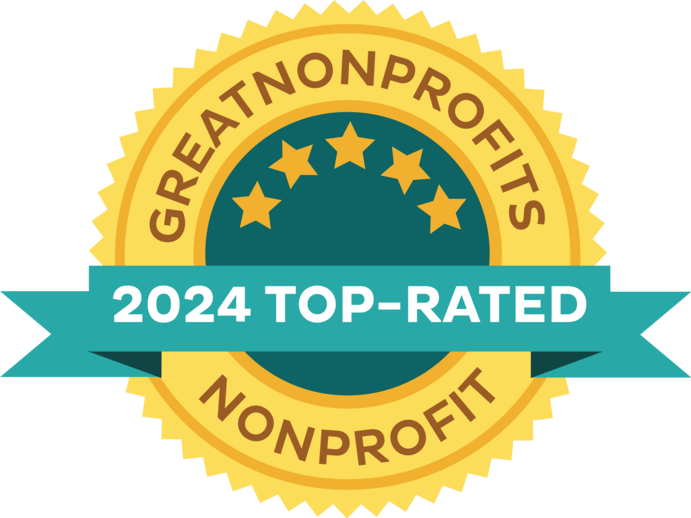Photo courtesy of Amy Callaghan
This article is republished on SkinCancer.org with the permission of Refinery29 as part of its Sun Blocked global call to action to wake up to the serious dangers of tanning. The Skin Cancer Foundation supports Refinery29’s mission to promote sun safety. Sign their petition to ban teen tanning in the U.S.
In 2013, Amy Callaghan, Scottish National Party candidate for Mid Dunbartonshire, was diagnosed with melanoma. Here is her story.
Growing up, I was the kid in the school playground whose mum would call them up to the gate and apply SPF through it. I have the palest skin imaginable, so tanning — whether indoors on sunbeds or outdoors at the beach — just wasn’t on my radar. Instead, I was a “fake tan Thursday” kinda girl who stuck to the shade and followed all the sun protection advice that was given to me. I can’t explain how diligent I was. That’s where a lot of my frustration comes from because at 19, I was diagnosed with melanoma skin cancer.
I’d had a pretty insignificant mole on my face since I was five years old; it was pink and round with distinct edges. My mum took me to my GP, then I was referred to dermatology where photos were taken of the mole to map the size and dimension. As I had progressed into my early teens, nothing had changed, but when I hit 19, the mole had grown in size. The border looked more irregular and the mole itself became crusty at times. I kept trying to convince myself that I had nicked it while doing my makeup or washing my face, but you know yourself whether you have or not. There was something wrong, I just didn’t know what.
I was flying and life was great. I felt invincible at that point, but I discovered very quickly that no one is invincible, and there’s no way to handle something like that.
I started to spiral and went back to my family GP, who knew about the mole from the beginning. I went five times in total. In not so many words, the GP basically said that I was being a “vain teenager”; that I was just concerned about my looks — and to trot on. I thought that a mole was preferable to a scar; I didn’t want a scar on my face, but the GP wouldn’t listen to my concerns, even though I’d brought the photos with me and proved that the mole was visibly changing. I pleaded with him to pay attention. The fifth time, my mum joined me and advocated for me. That’s when I was referred to someone more senior. I don’t want to place blame on GPs but I consider myself incredibly lucky that my mum did that for me. Not everyone has someone who can advocate for them or physically drag them to the doctor.
I went to the dermatologist and got the mole excised. Naively, I thought that this would be the end of it. I didn’t envision being called up to the hospital very late one evening with my parents to be told that further surgery was needed — and that I have skin cancer. That never crossed my mind when I was getting the mole removed and it took the wind out of my wings immediately. I was a teenager in my second year at university. I was flying and life was great. I felt invincible at that point, but I discovered very quickly that no one is invincible, and there’s no way to handle something like that.
VAT Burn Campaign
I was too scared to read about skin cancer at the time but I discovered that I was in a small percentage of people for whom melanoma wasn’t preventable — it’s in my genetic makeup. However, the vast majority of melanomas are preventable. When people don’t use adequate sun protection or they still use sunbeds, it genuinely terrifies me. As a politician, cases of preventable melanoma are what I’m trying to tackle with my VAT Burn campaign, which is calling on the UK government to remove VAT (a luxury tax) from sunscreen products which have a health benefit, considering that most skin cancers are caused by sun exposure.
I find it really hard talking about this but I made a pact with myself: If I was going to stand for parliament I would have to find a way to feel comfortable about having melanoma so that I could hopefully achieve something good from it. Currently, the UK government treats SPF and sun protection as if it’s a luxury and it’s not. This is a lack of common sense and joined up thinking. A public health measure like cutting VAT from SPF may cost an initial chunk of money but it saves lives — and a lot of money — in the long run. I feel obliged to help prevent this horrific diagnosis so that no one faces the same kind of trauma in their youth or their adult life.
Sadly, melanoma is very likely to return within five years of treatment and I relapsed two years later at age 21. I found a little hard lump on the inside of my mouth, probably the size of a TicTac, and I could move it around from the inside of my mouth. Right away, I called the plastic surgeon, Mr. Scott at the Glasgow Royal Infirmary, who had removed my melanoma the first time. They had me in within a couple of days to get it checked. A biopsy and an ultrasound scan confirmed what I had been fearing: it was melanoma.
So many melanomas can be prevented by using SPF daily, as well as avoiding sunbeds and tanning.
It almost felt like a ticking time bomb. I was so focused on surviving that I didn’t realize there was a chance of this not being the end. I was just so hyper-fixated on going through the initial diagnosis and to have it come back again was very, very traumatizing. Following my melanoma diagnosis, I had various issues with my university as they just didn’t get it. They didn’t understand that I wouldn’t be able to attend exams and classes because, funnily enough, I was in a hospital and pretty unwell at this point! They insisted that I hand in a signed document to get out of sitting exams. I’d come straight from the hospital in my pajamas with a jacket over the top. When I got there, my university advisor wasn’t even there to accept it.
It was Teenage Cancer Trust that helped me through this difficult time. The clinical nurse specialists put me in touch with other young people and a youth support coordinator would organize events for us. It could be something as simple as a Domino’s pizza in the ward one night, but you weren’t alone. Getting cancer at that age was very isolating but my specialist, Julie, was right there at the end of the phone. We still DM on Instagram, actually. She carried my mental health on her shoulders and she was the one that helped me get through it. She insisted that I get back to university and she made that life a little bit easier.
Since my second diagnosis, I’ve had a significant amount of surgeries — some intra-oral and some external. Each one took its toll that little bit more. I was just getting to the point where the invincibility was coming back and it was all taken away from me. That was really challenging. I often think, Who do I place the blame on for my melanoma? The reality is, we don’t need to place blame on anyone. In their entire career, a GP probably sees one case of teenage cancer and two instances of cancer in a 20-year-old, so it’s not an easy thing to spot, even if it is right in front of them. They need the tools to know when a referral is needed. There is also a significant lack of dermatologists in the UK. We’re not recruiting enough junior doctors to be dermatologists but we know that skin cancer is becoming a bigger problem than it was years ago. No one is to blame for their melanoma diagnosis. We just need more awareness of sun protection, which should be accessible to all. So many melanomas can be prevented by using SPF daily, as well as avoiding sunbeds and tanning.
I’m hesitant to feel like I’m lecturing people but it’s not just skin cancer; it’s a life changing diagnosis and I really don’t want anyone to face it.
I’m not actually an incredibly mole-y person but I’ve had most of them removed because of paranoia. Only one other mole on my body has shown pre-cancerous cells, and now, I go for regular mole checks with a dermatologist. I’ve had all of my moles mapped and I check my skin often to make sure there are no changes. Wearing SPF is the biggest thing for me, though. No matter the weather, I wear factor 50 SPF with broad spectrum UVA and UVB protection (which is what the NHS recommends for adequate sun protection) all over my face and neck. I even wear SPF indoors, as people don’t realize that UVA travels through windows.
Reapplication is key especially if you’re in the sun. It doesn’t have to be stressful, either. Sunscreen has come a long way. Aside from being diligent with SPF, I would have banned sunbeds yesterday. Your skin is your biggest organ and the damage done to it during tanning can’t be undone. I’m hesitant to feel like I’m lecturing people but it’s not just skin cancer; it’s a life changing diagnosis and I really don’t want anyone to face it.
I would encourage everyone, regardless of what they perceive their risk of melanoma to be, to check their skin regularly and to get in the habit of wearing sunscreen daily. Make sure you know yourself and your skin because any little change could be something important to report to a health professional. Above all, my advice would be to advocate for yourself as best you can. If you’re genuinely worried about something, make sure that your doctor or dermatologist takes it as seriously as you think it should be taken. After all, you know your body better than anyone else.
This interview was told to Jacqueline Kilikita and has been edited for length and clarity.




